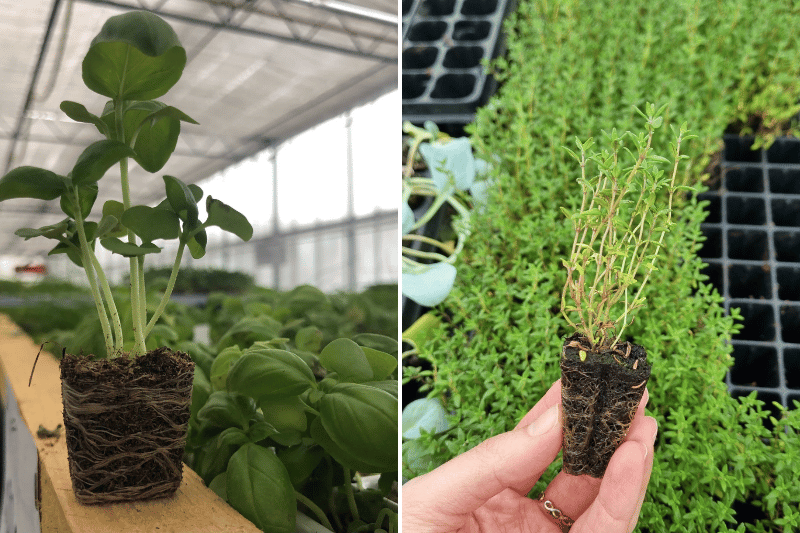Your order of vegetable plug plants and herbs in plug plants has just arrived! These young plants allow you to get a head start on sowing and save time in the vegetable garden. Among the most common are tomatoes, melons, cabbages, peppers and chillies, sweet potatoes, courgettes, and aubergines for the vegetable garden, as well as basil, parsley, chives, and mint for herb gardens. Here are the essential steps to welcome, prepare, and plant them to ensure their establishment and vigorous growth.
Unpack and check your vegetable plug plants
Upon receipt, carefully open your package. The plug plants are packed in biodegradable cardboard shells to protect them during transit. Check that the plants are in good condition:
- The leaves should be green and vigorous
- The roots should be moist and not dried out
- No signs of mould, yellowing, or wilting
If the plants seem slightly tired, don’t worry! A bit of water and light will help them recover quickly.

Rehydrate your plug plants
Before planting, it’s essential to rehydrate the roots:
- Soak the plug plants in a container of water at room temperature for a few minutes
- Drain them slightly before planting
This helps avoid water stress and ensures the plants establish well.
Choose the right location
Vegetable and herb plug plants should be placed in well-drained soil rich in nutrients. Be careful, as some species are sensitive to cold temperatures!
- In the ground: enrich the soil with mature compost or well-rotted manure*
- In pots, planters, or raised beds: use a special vegetable and herb compost, well-draining and enriched with organic fertiliser
*Note: Some vegetable plug plants, such as tomatoes or courgettes, are often too young to be planted directly in the ground. It’s best to pot them in buckets or pots with compost for a few weeks before their final planting in the vegetable garden.
Planting vegetable plug plants
You can plant them immediately or wait a few days, especially if the soil is too cold or waterlogged.
- Dig a hole slightly larger than the plug
- Place the plant, keeping the top of the plug level with the soil
- Gently firm the soil around it and water generously
For some vegetable plants like tomatoes, don’t hesitate to bury the stem slightly to encourage good rooting.
Initial care after planting
To ensure good adaptation and stimulate growth:
- Water regularly without waterlogging the soil
- Protect young plants from scorching sun and strong winds
- Avoid fertilising too soon; wait a few weeks to stimulate growth
After a few days, your plants will start to root well and develop. With proper care, you’ll enjoy bountiful harvests throughout the season!
































Comments